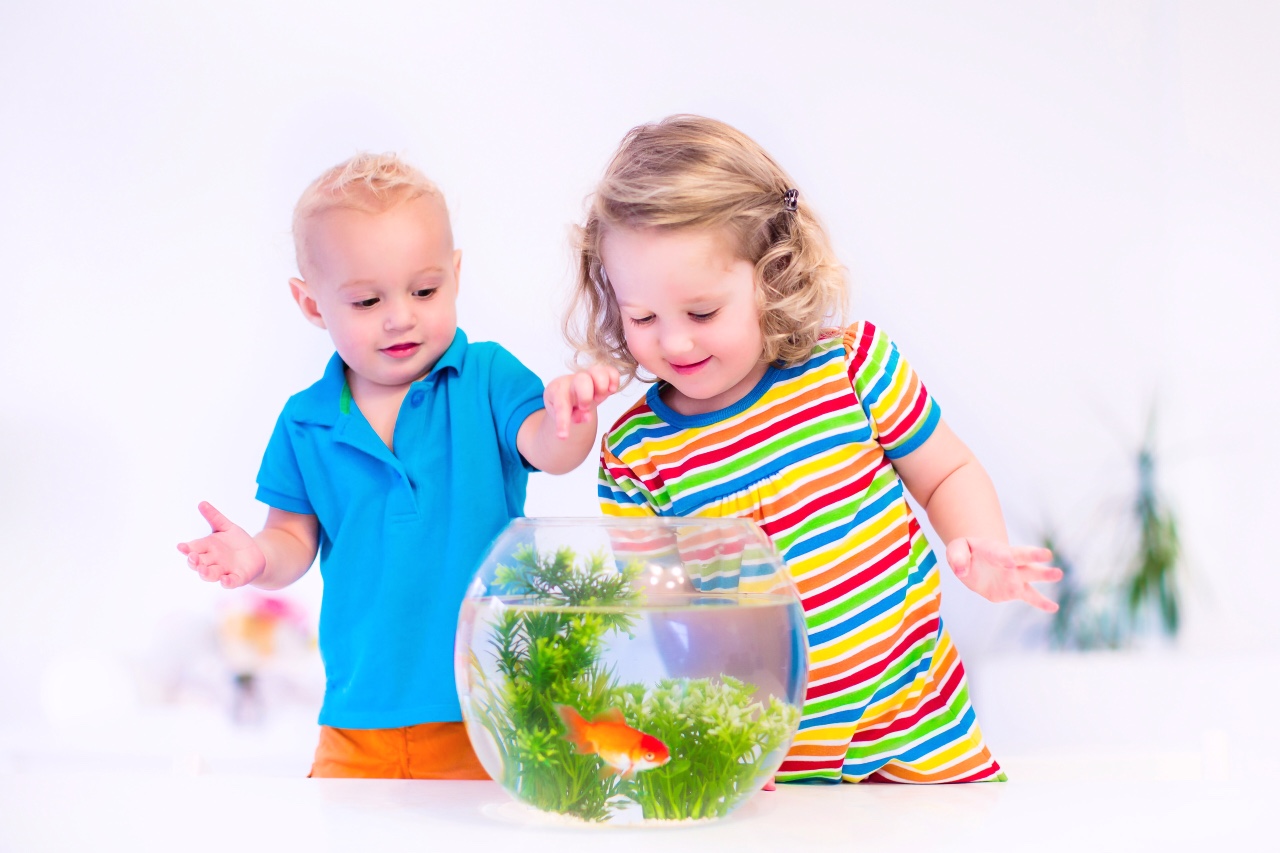Algae are commonly found in all aquariums, but it is only good if they are in small quantities. A limited number of algae are actually healthy for the ecosystem of the aquarium. But too much of it indicates poor water conditions, which can affect the health of creatures living in it.
The algae grow fast, so it is important to remove them once you detect their presence in your aquarium. Cleaning the tank regularly is one solution to prevent their growth, but the task can become hectic for some.
Nitrate and light are the two main factors that accelerate the growth of algae. So, controlling them is another solution for preventing the growth of algae in the aquarium. Don’t let the tank get direct exposure to sunlight, and if you are using something for lightning the tank, you should use it for 6 hours only.
Another solution is to have aquarium algae eaters or a cleaning crew for your tank. There are many freshwater algae eaters available in the market that will clean your fish tank. They are usually creatures who feed largely on the algae. You can pick the best algae eater fish for your aquarium.
In this article, we will learn about the best algae eaters that you can have in your aquarium. They are easy to care for and don’t need much maintenance. Some of them will just add more variety and activity to your tank.
Their requirements for tank set up and water conditions can differ from species to species. We have prepared precise details about each of them for you to find the best tank eater for your aquarium.
The Best Algae Eaters
Twig Catfish
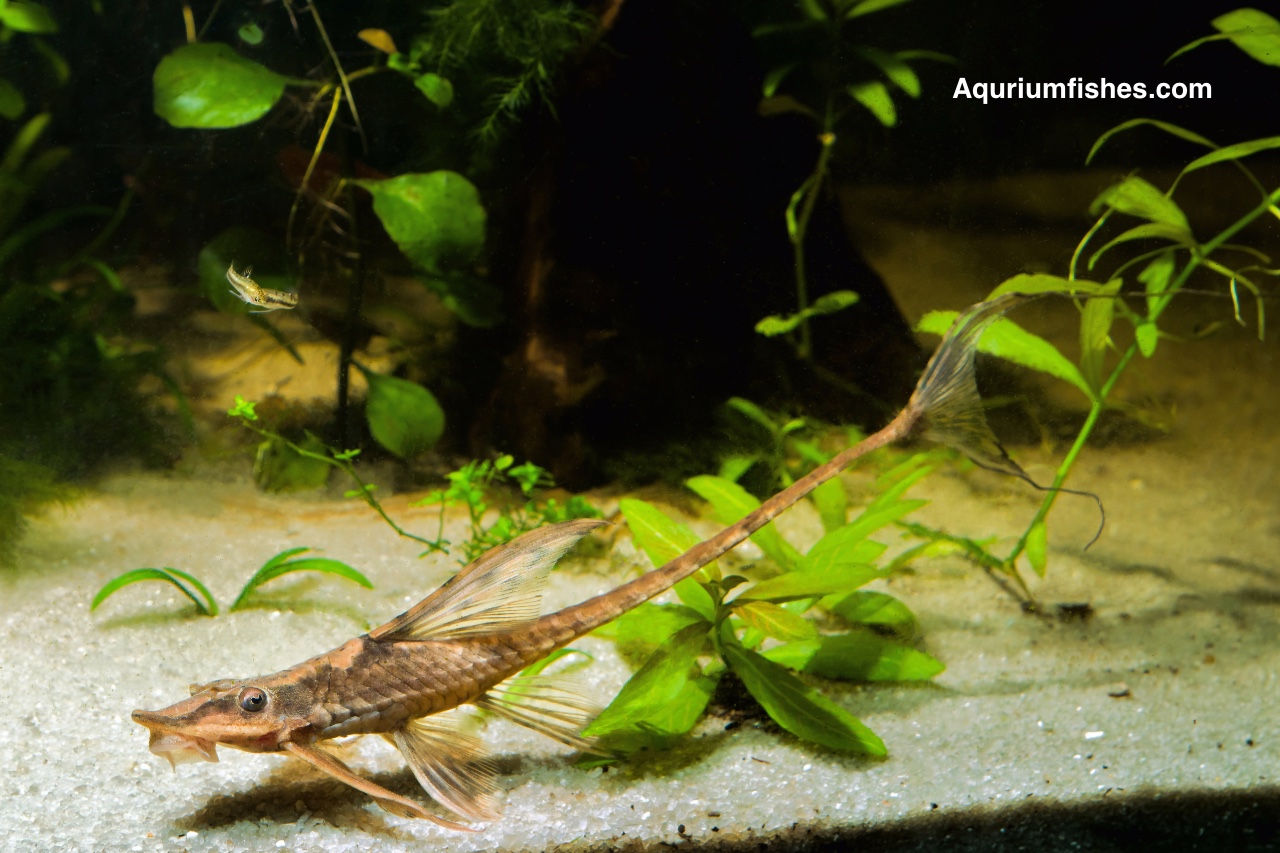
Twig catfish is an algae eating fish. This species of fish are known to eat most of the species of the algae. But you have to supplement their diet with other food as well. Feeding on the algae alone can lead to nutrient deficiency in them.
| Name | Twig Catfish or Whiptail Catfish | |
| Scientific Name | Rineloricaria lanceolate | |
| Tank Size and Conditions | Min tank size | 12 gallons per pair |
| pH | 6.0 to 8.0 | |
| Hardness | Moderately soft | |
| Care Level | Easy to Intermediate | |
| Maximum Size | 4 inches (10cm) | |
| Compatible With | Tetras, Pencil fish, and Hatchets | |
| Avoid | Bards and Cichlids | |
Bristlenose Plecos
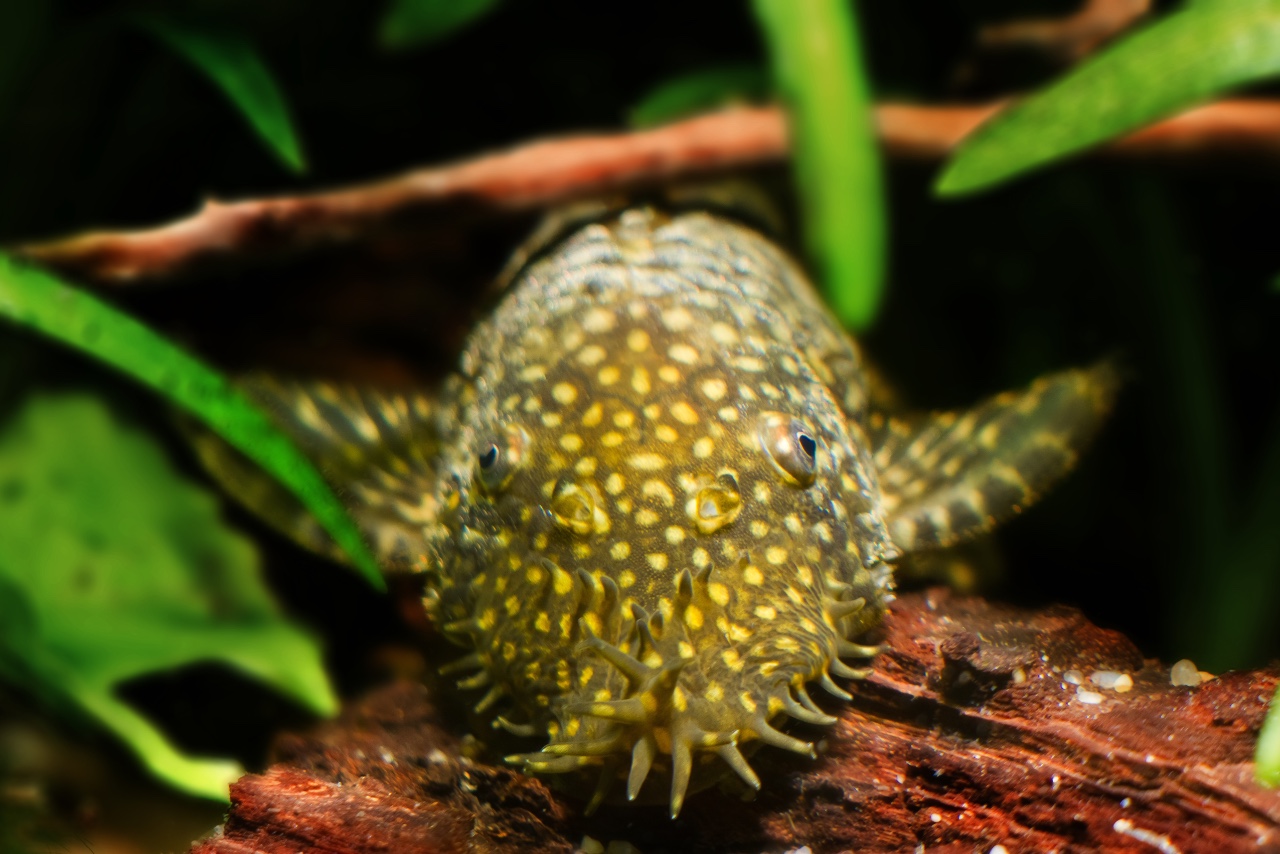
Bristlenose plecos are a nice addition to your aquarium if you are looking for fish that clean tanks. This species of fish is found in many colors that darken as the fish matures. They are mainly herbivores but need a small amount of protein in their diet as well. You can feed them pellets to provide the whole nutrition to their diet.
| Name | Bristlenose Catfish or Bushynose Catfish | |||
| Scientific Name | Ancistrus temminckii, Ancistrus sp. | |||
| Tank Size and Conditions | Min tank size | 25 gallons | ||
| pH | 6.5-7.5 | |||
| Hardness | Slightly harder, that is, 20-25 | |||
| Care Level | Easy | |||
| Maximum Size | 5 inches (12cm) | |||
| Compatible With | most fish in a community tank | |||
Siamese Flying Fox
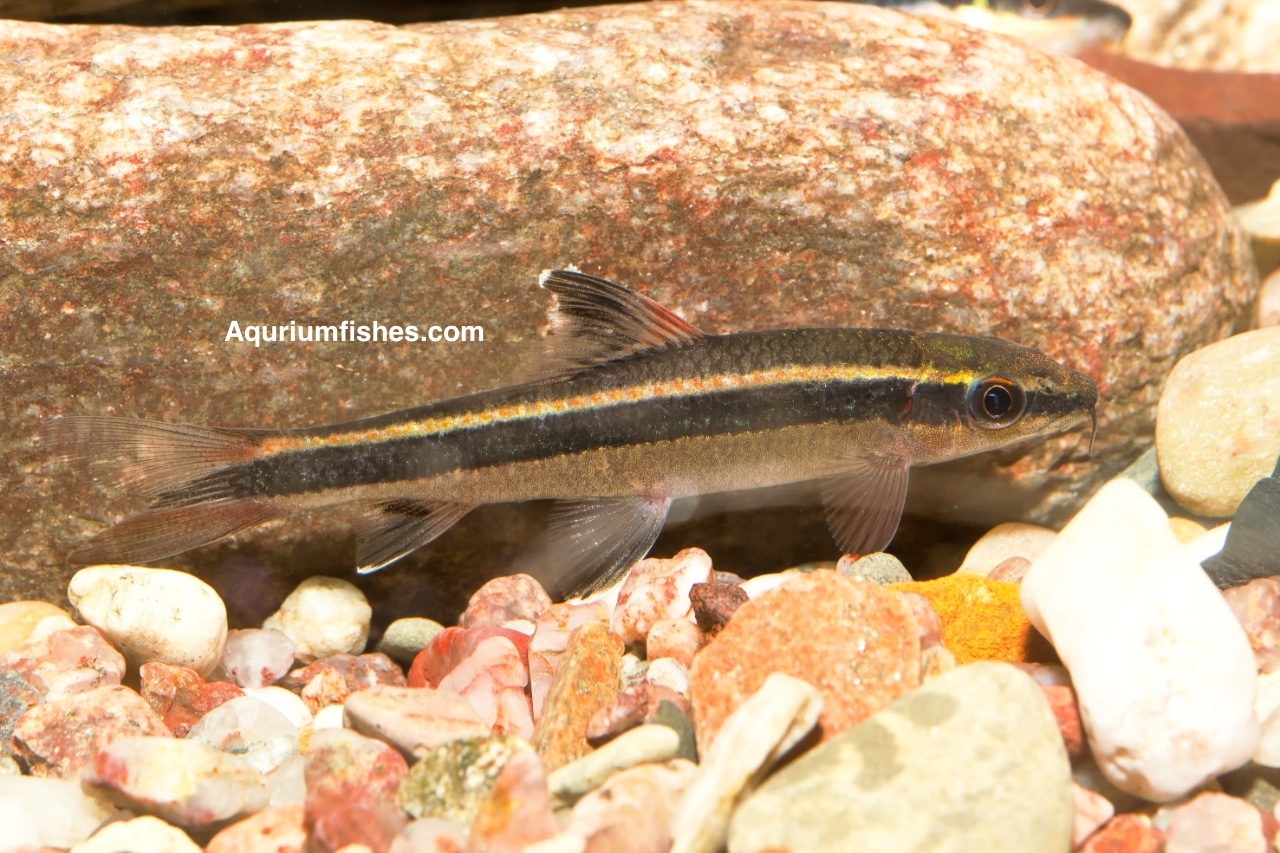
The siamese flying fox is another good algae eating fish for your aquarium. These are small fishes who efficiently clean the tank by eating algae from decorative materials, glass, and plants. They can also eat leftover food from the bottom of the tank, like vegetables, flakes, or live food.
The only problem with them is they can get aggressive so never overcrowd the tank even with the same species.
| Name | Siamese Flying Fox | |||
| Tank Size and Conditions | Min Tank Size | 20 gallons | ||
| pH | 5.5-7.5 | |||
| Hardness | Soft to Slightly Hard water | |||
| Care Level | Easy | |||
| Maximum Size | 6.3 inches (16cm) | |||
| Compatible With | Most of the species of fishes such as the red-tailed shark | |||
Siamese Algae Eater

Are you looking for a fish that eat algae? Does fish eat algae? Siamese algae eater fish can become a tank mate. These algae eaters need a heavily planted environment to rest and hide. They can feed on a variety of foods but need both vegetable-based food and protein in their diet.
| Name | Siamese Algae Eater | ||
| Tank Size and Conditions | Min tank size | 30 gallons | |
| pH | 6.5-7.0 | ||
| Temperature | 75-79oF | ||
| Care Level | Moderate | ||
| Maximum Size | 6 inches | ||
| Compatible With | Tetras, other Barbs, Plecos and Corydoras, etc. | ||
Molly Fish

Do Mollies eat algae? Yes, Mollies eat algae. Mollies are not usually counted as algae eaters, but they are known to feed on algae from the rocks and plants. People generally keep them because of their beautiful and attractive appearances, not as algae eating fish.
| Name | Mollies | ||
| Scientific name | Poecilia sphenops | ||
| Tank Size and Conditions | Min Tank Size | 20 gallons | |
| pH | 7.5 – 8.5 | ||
| Temperature | 72 to 78oF | ||
| Hardness | 20 to 30 kH | ||
| Care Level | Easy | ||
| Maximum Size | 2 – 4 inches (5-10cm) | ||
| Compatible With | Swordtails, Corydoras Catfish, Angelfish, Bigger Tetras, and Platies | ||
Otocinclus Catfish

Otocinclus catfish is one of the famous and smallest aquarium algae eaters. They are perfect for small aquariums and thrive well in small groups. They also need plenty of plants and hiding places in the aquarium.
| Name | Otocinclus Catfish | ||
| Scientific Name | Otocinclus sp. | ||
| Tank Size and Conditions | Min Tank Size | 30 gallons | |
| pH | 6.5-7.5 | ||
| Temperature | 72 – 79oF | ||
| Care Level | Med-Difficult | ||
| Maximum Size | 2 inches (5cm) | ||
| Compatible With | Angelfish, Danios, Cherry Barbs, Guppies, etc. | ||
Malaysian Trumpet Snail
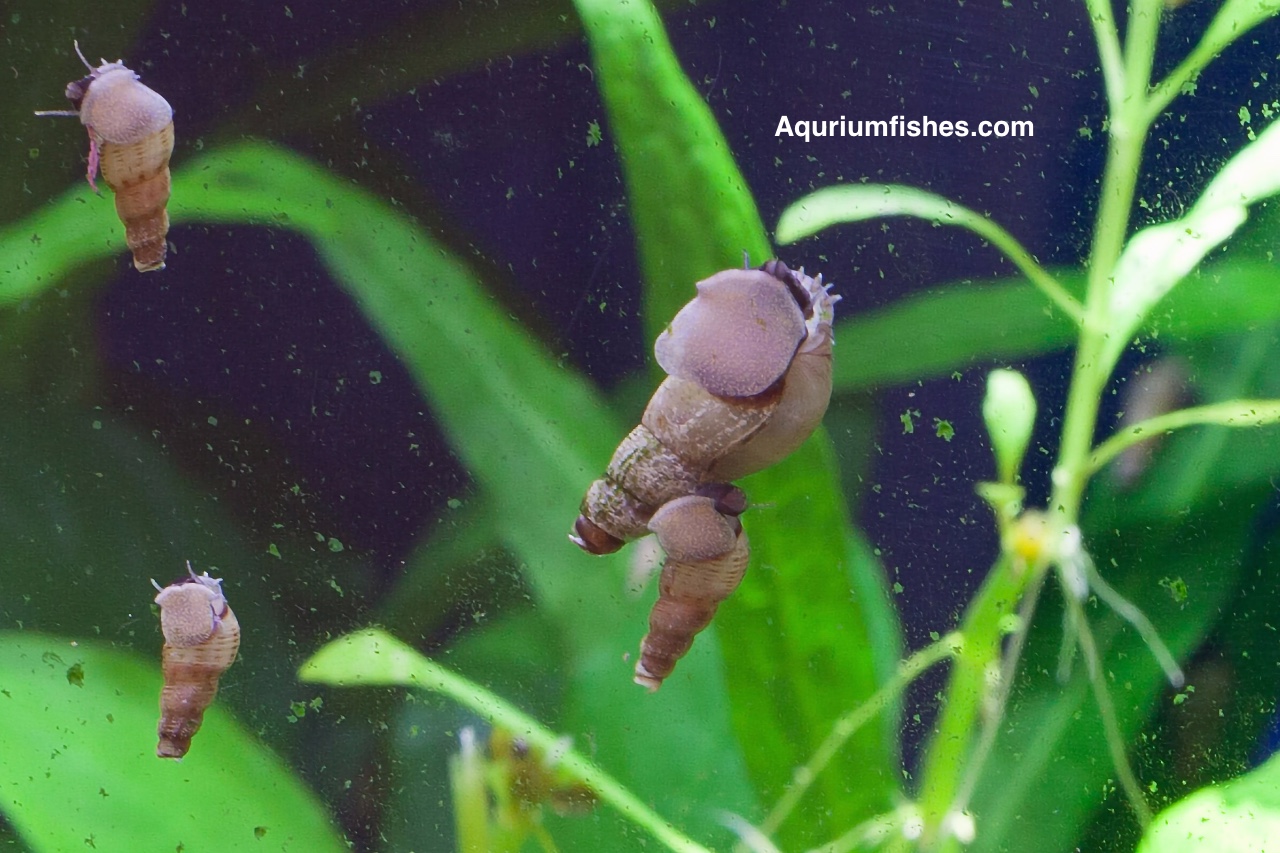
Do snails eat algae? Yes, of course, they eat. Malaysian Trumpet snails are small in size but make a perfect tank cleaner. They are annoying to some aquarists as they reproduce quite quickly. But they are easy to care for and need minimal maintenance.
| Name | Malaysian Trumpet Snail | |
| Scientific Name | Melanoides tuberculate | |
| Tank Size and Conditions | Min tank size | 10 gallons |
| pH | 7.0 – 7.5 | |
| Temperature | 70 to 78oF | |
| Care Level | Easy | |
| Maximum Size | 2cm | |
| Compatible With | Other snails like Ramshorn snails, Nerite Snails, Mystery Snails, etc. shrimps such as Amano Shrimps, Ghost Shrimps, etc. and for fishes Cory Catfish and Otocinclus Catfish | |
Ramshorn Snail

If you are searching for snails that eat algae. Ramshorn snail is for you. These snails are another effective tank cleaner and don’t harm the plants’ leaves as other snails do. They can feed on algae and dead plant matters. They are also known to reproduce quickly.
| Name | Ramshorn Snail | |
| Scientific name | Planorbidae | |
| Tank Size and Conditions | Min Tank Size | 5 gallons |
| pH | 6.5-7.5 | |
| Temperature | 70 – 78oF | |
| Care Level | Easy | |
| Maximum Size | 2cm | |
| Compatible With | Other snails like Malaysian Trumpet Snail, Nerite Snails, Mystery Snails, etc. shrimps such as Amano Shrimps, Ghost Shrimps, etc. and for fishes Cory Catfish and Otocinclus Catfish | |
Nerite Snail
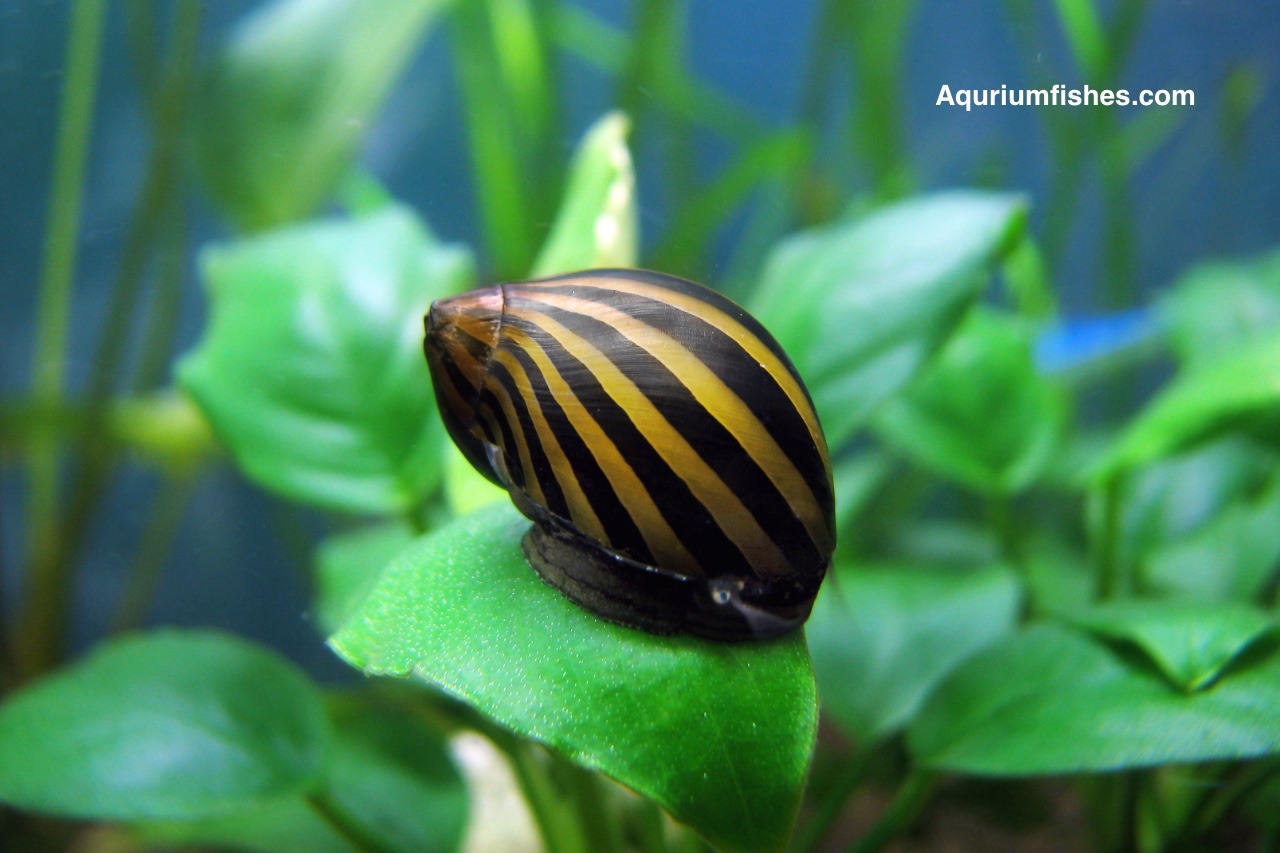
Nerite snails are another good name for the algae eater. They are quite famous for their colorful and attractive appearances. They are small and don’t breed fast like other snails. Nerite snails work hard in cleaning the substrate of the tank.
| Name | Nerite Snails | |
| Scientific names | Neritina sp. | |
| Tank Conditions | Min tank size | 10 gallons |
| Temperature | 72 – 78oF | |
| pH | Approx. 7.5 | |
| Care Level | Easy | |
| Maximum Size | 1 inch (2.5 cm) | |
| Compatible With | Other snails like Ramshorn Snails, Malaysian Trumpet Snail, Mystery Snails, etc. shrimps such as Amano Shrimps, Ghost Shrimps, etc. and for fishes Cory Catfish and Otocinclus Catfish | |
Mystery Snail

Mystery snails are found in different colors and shell patterns. They are effective algae eaters. They will keep the walls of your aquarium shining and add diversity to their colorful appearance.
| Name | Mystery Snail | |
| Scientific Name | Pomacea bridgesii | |
| Tank Size and Conditions | Min tank size | 5 to 10 gallons |
| pH | 7.0 to 7.5 | |
| Temperature | 68 to 82oF | |
| Care Level | Beginner | |
| Maximum Size | 2 inches (5cm) | |
| Compatible With | Other snails like Ramshorn Snails, Malaysian Trumpet Snail, etc. shrimps such as Amano Shrimps, Ghost Shrimps, etc. and for fishes Cory Catfish and Otocinclus Catfish | |
Amano Shrimp
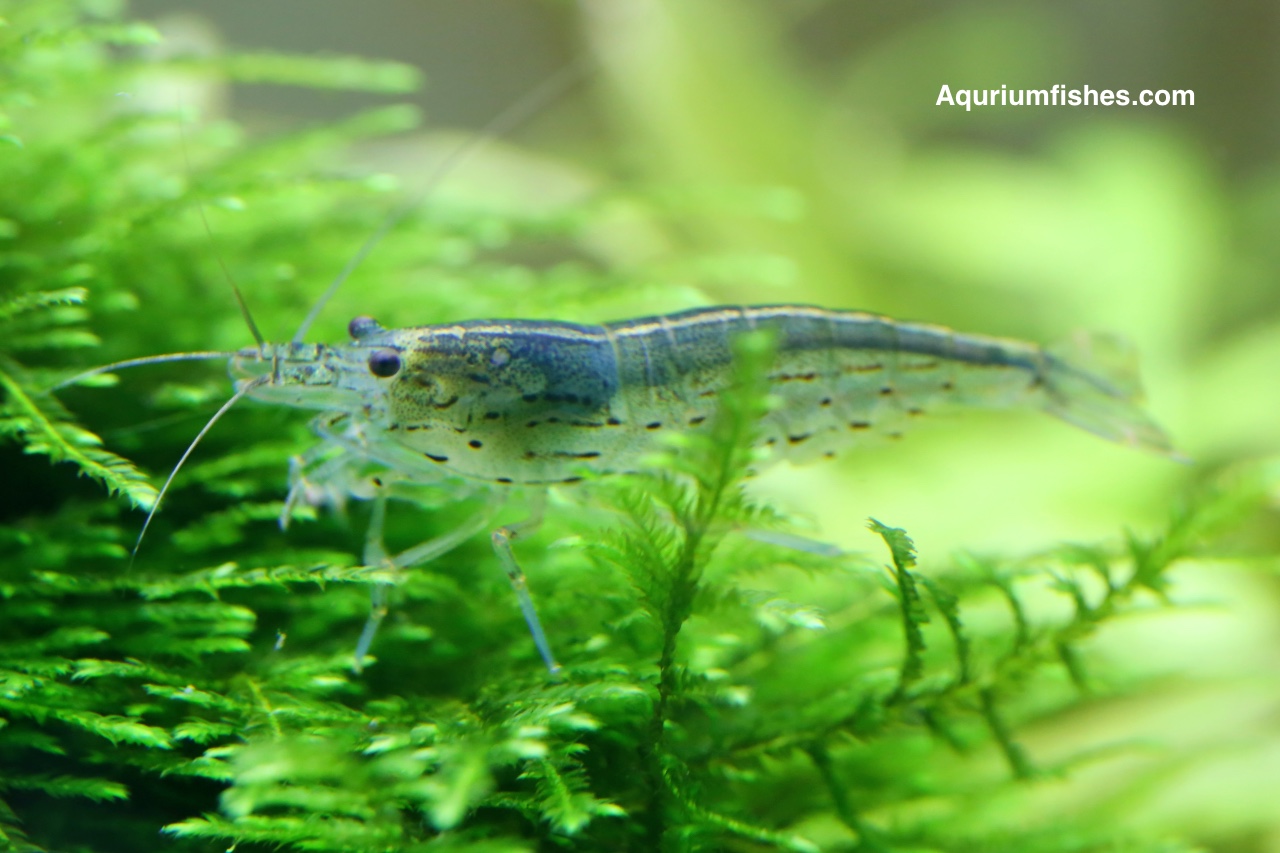
Algae eating shrimp can be a good choice, if you don’t have an option for fish or snail. Amano Shrimp is considered the best algae eater shrimp. They are great swimmers and can be kept in a small group of 3 or more on a heavy plantation.
| Name | Amano Shrimp | |
| Scientific Name | Caridina multidentata | |
| Tank Size and Conditions | Min Tank Size | 5 gallons |
| pH | 6.5 – 7.5 | |
| Temperature | 72 – 78oF | |
| Care Level | Easy | |
| Maximum Size | 2 inches (5cm) | |
| Compatible With | Other shrimps such as Vampire Shrimps, Ghost Shrimps, etc. snails like Ramshorn Snails, Malaysian Trumpet Snail, Mystery snails, etc. and for fishes Cory Catfish and Otocinclus Catfish | |
Cherry Shrimp
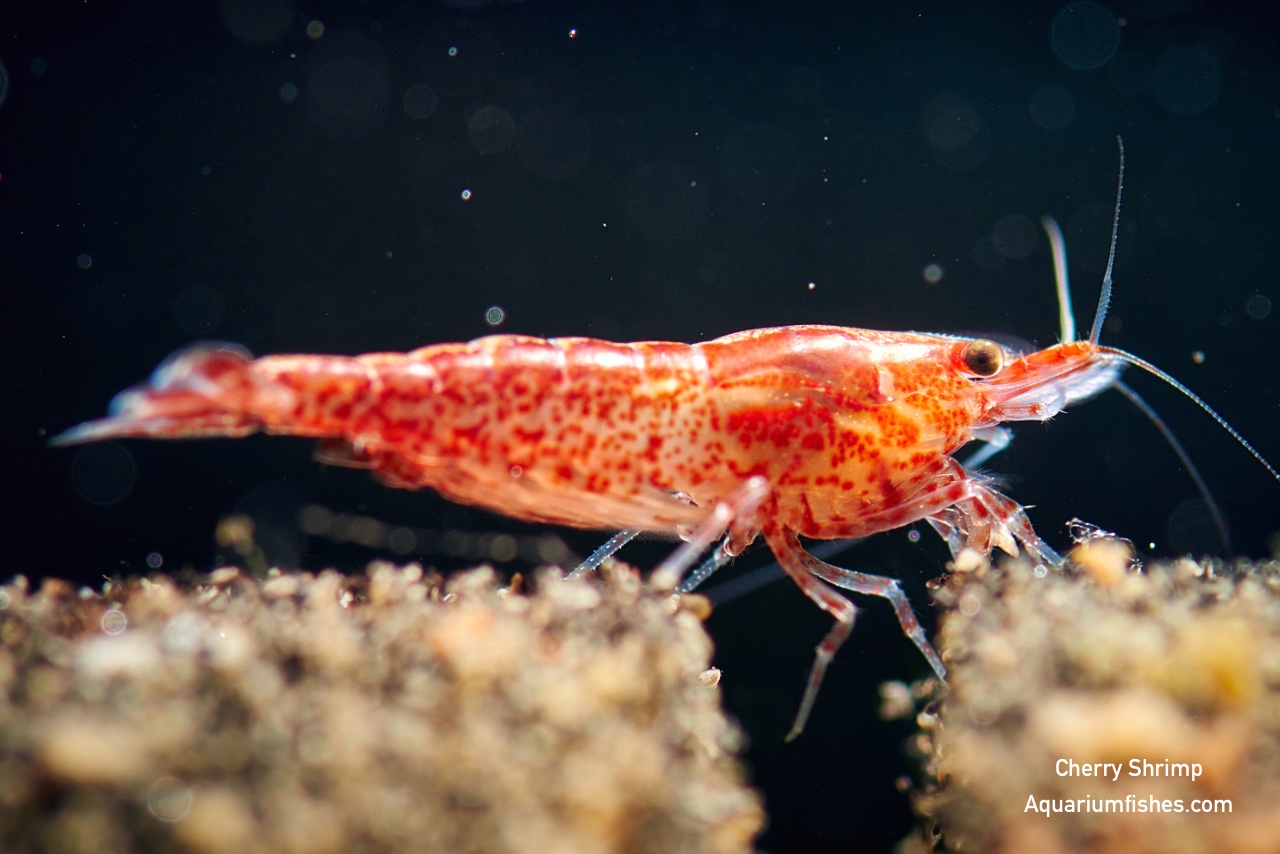
Cherry shrimps have a bright appearance, as the name suggests. They will help you keep the tank clean and shining while adding variety with their active movements and bright colorations.
| Name | Cherry Shrimp | |
| Scientific Name | Neocaridina heteropoda var | |
| Tank Size and Conditions | Min tank size | 2 gallons for 2-4 shrimps |
| pH | 6.5 – 8.0 | |
| Temperature | 72 – 78oF | |
| Care Level | Easy | |
| Maximum Size | 1.6 inches (4cm) | |
| Compatible With | Other shrimps such as Vampire Shrimps, Ghost Shrimps, etc. snails like Ramshorn Snails, Malaysian Trumpet Snail, Mystery snails, etc. and for fishes Cory Catfish and Otocinclus Catfish | |
Ghost Shrimp

Ghost shrimps are transparent as the inside of their body is quite visible. You will be able to see the internal mechanism of their body when they feed. This is what makes them fascinating. So, when somebody asks you, do ghost shrimp eat algae, you can suggest this algae eater.
| Name | Ghost Shrimp | |
| Scientific name | Palaemonetes sp. | |
| Tank Size and Conditions | Min Tank Size | 5 gallons |
| pH | 6.5 – 8.0 | |
| Temperature | 72 – 82oF | |
| Care Level | Easy | |
| Maximum Size | 2 inches (3-5cm) | |
| Compatible With | Other shrimps such as Vampire Shrimps, Red Cherry Shrimps, etc. snails like Ramshorn Snails, Malaysian Trumpet Snail, Mystery snails, etc. and for fishes Cory Catfish and Otocinclus Catfish | |
Which Algae Eater Would You Choose?
There are many ways of controlling algae growth in the tank. Adding algae eater fish will add variety and keep the tank looking appealing. The algae eaters come in all sizes, and different algae eaters need different tank conditions. So, you can choose the one according to the need of your aquarium.
There are many options for the small and peaceful community tanks, but your options are limited if you have larger fishes. The aggressive and large fishes can harm or eat these algae eaters.
Which species do you consider is the best algae eater for your tank? Did we miss any other aquarium algae eaters? Let us know in the comment section below.


